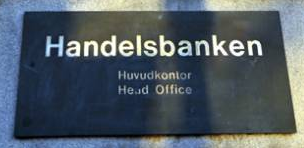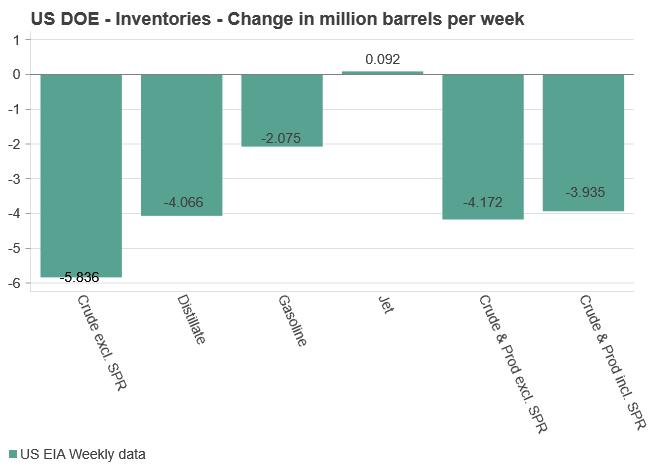Analys
SHB Råvarukommentar 4 november 2016

Metallvecka i London
Under veckan har vi varit på den årliga sammankomsten för basmetaller i London, LME Week. Intrycket var helt klart positivt, annat var heller inte att vänta efter att zink stigit med 52%, nickel med 18%, aluminium med 14% och den enda eftersläparen är koppar med en uppgång på 4% så här långt under året. Vi noterade tidigt att det var en tydlig skillnad mellan fysiska metallhandlare och de finansiella aktörerna. Den fysiska marknaden upplever stark efterfrågan och ser få problem på himlen för närvarande. Den finansiella marknaden pekade på att efterfrågan kommer från de penningpolitiska stimulanser Kina vidtagit under 2015 och de finanspolitiska stimulanser som pågått under 2015 och 2016.
Nickel är den metall som anses ha bäst förutsättningar att klättra vidare. De senaste buden kring utvecklingen på Filippinerna och i Indonesien verkar inte ha påverkat sinnestämningen nämnvärt. Världens två största länder kommer fortsätta producera på låga nivåer under 2017 och det ska driva priset vidare. Årets raket, zink väntas också stiga ytterligare när det andra året med underskott i marknadsbalansen tar vid. Zinkpriserna väntas av många ligga i en stigande trend fram till 2019 före nya gruvor startar upp och balanserar marknaden. Åt det mer negativa hållet väntas koppar och aluminium ligga. Koppar tyngs av att nya gruvor startas upp och trots årets kinesiska stimulanser har koppar knappt stigit i pris. Aluminium har fått stöd av de skenande kolpriserna efter att Kinas planerade nedstängning av olönsamma kolgruvor gått överstyr och drivit upp kolpriserna med 100%. Kinas ledare har nu börja mjuka upp policyn och kolpriserna kommer säkerligen ner igen, även om vi tror att det dröjer till efter vintern. Då lär också aluminiumpriserna falla tillbaka.
Av de orosmoment som tyngde stämningen på förra årets konferens, Feds kommande räntehöjning och risken för en hårdlandning i Kina märktes nu inte mycket. Fed har effektivt övertygat marknaden om att USA:s räntor kommer stiga långsamt och Kina har, minst lika effektivt övertygat världen om att landet stimulerar ekonomin när tillväxten avtar för mycket.
Svagare olja
Under veckan har oljepriset fallit tillbaka varje dag och sammanlagt med över 8% de senaste fem handelsdagarna. Luften har gått ur marknadens förtroende för OPEC:s möjlighet att genomföra en produktionssänkning sedan Irak valde att gå ur avtalet förra veckan. Som lök på laxen visade dessutom USA:s veckovisa lagerdata på en rekordstor lageruppbyggnad förra veckan. Efter att Irak backade ur tror vi nu att sannolikheten för ett avtal i Wien den 30/11 är 40%, mot tidigare 60%, och att priset kommer falla till omkring USD 40 utan ett starkt intryck från OPEC vid det officiell mötet. Om OPEC nu överraskar med en plan för hur de ska genomföra sänkningen tror vi potentialen är omkring USD 50.
Elmarknaden mot vinterkyla
Veckan har medfört betydligt kallare väder med ett fall från medeltemperatur i landet omkring 6 grader till omkring 0-strecket från torsdag vilket ökat elkonsumtionen. Priserna började starkt men föll tillbaka på ökad vindkraftsproduktion och steg sedan igen när kylan kom och vinden avtog.
Vatten- och snöbalansen i Norge och Sverige ligger efter v.43 på en energinivå på 84,7 TWh, vilket är 20,6 TWh under den normala nivån. Vi går nu in i vinterperioden (mitten av november till mars) med ett energiunderskott i Norge och Sverige kring 20-25 TWh beroende på väderutvecklingen framåt. Framöver är det låg sannolikhet att få en förbättring av nivån i vattenmagasinen eftersom huvuddelen av nederbördsenergin som nu kommer lägger sig som snö. Det blir därmed ett temperaturspel hur elpriserna ska utveckla sig men alla förutsättningar finns för mycket högre elpriser den här vintern.
[box]SHB Råvarukommentar är producerat av Handelsbanken och publiceras i samarbete och med tillstånd på Råvarumarknaden.se[/box]
Ansvarsbegränsning
Detta material är producerat av Svenska Handelsbanken AB (publ) i fortsättningen kallad Handelsbanken. De som arbetar med innehållet är inte analytiker och materialet är inte oberoende investeringsanalys. Innehållet är uteslutande avsett för kunder i Sverige. Syftet är att ge en allmän information till Handelsbankens kunder och utgör inte ett personligt investeringsråd eller en personlig rekommendation. Informationen ska inte ensamt utgöra underlag för investeringsbeslut. Kunder bör inhämta råd från sina rådgivare och basera sina investeringsbeslut utifrån egen erfarenhet.
Informationen i materialet kan ändras och också avvika från de åsikter som uttrycks i oberoende investeringsanalyser från Handelsbanken. Informationen grundar sig på allmänt tillgänglig information och är hämtad från källor som bedöms som tillförlitliga, men riktigheten kan inte garanteras och informationen kan vara ofullständig eller nedkortad. Ingen del av förslaget får reproduceras eller distribueras till någon annan person utan att Handelsbanken dessförinnan lämnat sitt skriftliga medgivande. Handelsbanken ansvarar inte för att materialet används på ett sätt som strider mot förbudet mot vidarebefordran eller offentliggörs i strid med bankens regler.
Analys
Tightening fundamentals – bullish inventories from DOE

The latest weekly report from the US DOE showed a substantial drawdown across key petroleum categories, adding more upside potential to the fundamental picture.

Commercial crude inventories (excl. SPR) fell by 5.8 million barrels, bringing total inventories down to 415.1 million barrels. Now sitting 11% below the five-year seasonal norm and placed in the lowest 2015-2022 range (see picture below).
Product inventories also tightened further last week. Gasoline inventories declined by 2.1 million barrels, with reductions seen in both finished gasoline and blending components. Current gasoline levels are about 3% below the five-year average for this time of year.
Among products, the most notable move came in diesel, where inventories dropped by almost 4.1 million barrels, deepening the deficit to around 20% below seasonal norms – continuing to underscore the persistent supply tightness in diesel markets.
The only area of inventory growth was in propane/propylene, which posted a significant 5.1-million-barrel build and now stands 9% above the five-year average.
Total commercial petroleum inventories (crude plus refined products) declined by 4.2 million barrels on the week, reinforcing the overall tightening of US crude and products.


Analys
Bombs to ”ceasefire” in hours – Brent below $70

A classic case of “buy the rumor, sell the news” played out in oil markets, as Brent crude has dropped sharply – down nearly USD 10 per barrel since yesterday evening – following Iran’s retaliatory strike on a U.S. air base in Qatar. The immediate reaction was: “That was it?” The strike followed a carefully calibrated, non-escalatory playbook, avoiding direct threats to energy infrastructure or disruption of shipping through the Strait of Hormuz – thus calming worst-case fears.

After Monday morning’s sharp spike to USD 81.4 per barrel, triggered by the U.S. bombing of Iranian nuclear facilities, oil prices drifted sideways in anticipation of a potential Iranian response. That response came with advance warning and caused limited physical damage. Early this morning, both the U.S. President and Iranian state media announced a ceasefire, effectively placing a lid on the immediate conflict risk – at least for now.
As a result, Brent crude has now fallen by a total of USD 12 from Monday’s peak, currently trading around USD 69 per barrel.
Looking beyond geopolitics, the market will now shift its focus to the upcoming OPEC+ meeting in early July. Saudi Arabia’s decision to increase output earlier this year – despite falling prices – has drawn renewed attention considering recent developments. Some suggest this was a response to U.S. pressure to offset potential Iranian supply losses.
However, consensus is that the move was driven more by internal OPEC+ dynamics. After years of curbing production to support prices, Riyadh had grown frustrated with quota-busting by several members (notably Kazakhstan). With Saudi Arabia cutting up to 2 million barrels per day – roughly 2% of global supply – returns were diminishing, and the risk of losing market share was rising. The production increase is widely seen as an effort to reassert leadership and restore discipline within the group.
That said, the FT recently stated that, the Saudis remain wary of past missteps. In 2018, Riyadh ramped up output at Trump’s request ahead of Iran sanctions, only to see prices collapse when the U.S. granted broad waivers – triggering oversupply. Officials have reportedly made it clear they don’t intend to repeat that mistake.
The recent visit by President Trump to Saudi Arabia, which included agreements on AI, defense, and nuclear cooperation, suggests a broader strategic alignment. This has fueled speculation about a quiet “pump-for-politics” deal behind recent production moves.
Looking ahead, oil prices have now retraced the entire rally sparked by the June 13 Israel–Iran escalation. This retreat provides more political and policy space for both the U.S. and Saudi Arabia. Specifically, it makes it easier for Riyadh to scale back its three recent production hikes of 411,000 barrels each, potentially returning to more moderate increases of 137,000 barrels for August and September.
In short: with no major loss of Iranian supply to the market, OPEC+ – led by Saudi Arabia – no longer needs to compensate for a disruption that hasn’t materialized, especially not to please the U.S. at the cost of its own market strategy. As the Saudis themselves have signaled, they are unlikely to repeat previous mistakes.
Conclusion: With Brent now in the high USD 60s, buying oil looks fundamentally justified. The geopolitical premium has deflated, but tensions between Israel and Iran remain unresolved – and the risk of missteps and renewed escalation still lingers. In fact, even this morning, reports have emerged of renewed missile fire despite the declared “truce.” The path forward may be calmer – but it is far from stable.
Analys
A muted price reaction. Market looks relaxed, but it is still on edge waiting for what Iran will do

Brent crossed the 80-line this morning but quickly fell back assigning limited probability for Iran choosing to close the Strait of Hormuz. Brent traded in a range of USD 70.56 – 79.04/b last week as the market fluctuated between ”Iran wants a deal” and ”US is about to attack Iran”. At the end of the week though, Donald Trump managed to convince markets (and probably also Iran) that he would make a decision within two weeks. I.e. no imminent attack. Previously when when he has talked about ”making a decision within two weeks” he has often ended up doing nothing in the end. The oil market relaxed as a result and the week ended at USD 77.01/b which is just USD 6/b above the year to date average of USD 71/b.

Brent jumped to USD 81.4/b this morning, the highest since mid-January, but then quickly fell back to a current price of USD 78.2/b which is only up 1.5% versus the close on Friday. As such the market is pricing a fairly low probability that Iran will actually close the Strait of Hormuz. Probably because it will hurt Iranian oil exports as well as the global oil market.
It was however all smoke and mirrors. Deception. The US attacked Iran on Saturday. The attack involved 125 warplanes, submarines and surface warships and 14 bunker buster bombs were dropped on Iranian nuclear sites including Fordow, Natanz and Isfahan. In response the Iranian Parliament voted in support of closing the Strait of Hormuz where some 17 mb of crude and products is transported to the global market every day plus significant volumes of LNG. This is however merely an advise to the Supreme leader Ayatollah Ali Khamenei and the Supreme National Security Council which sits with the final and actual decision.
No supply of oil is lost yet. It is about the risk of Iran closing the Strait of Hormuz or not. So far not a single drop of oil supply has been lost to the global market. The price at the moment is all about the assessed risk of loss of supply. Will Iran choose to choke of the Strait of Hormuz or not? That is the big question. It would be painful for US consumers, for Donald Trump’s voter base, for the global economy but also for Iran and its population which relies on oil exports and income from selling oil out of that Strait as well. As such it is not a no-brainer choice for Iran to close the Strait for oil exports. And looking at the il price this morning it is clear that the oil market doesn’t assign a very high probability of it happening. It is however probably well within the capability of Iran to close the Strait off with rockets, mines, air-drones and possibly sea-drones. Just look at how Ukraine has been able to control and damage the Russian Black Sea fleet.
What to do about the highly enriched uranium which has gone missing? While the US and Israel can celebrate their destruction of Iranian nuclear facilities they are also scratching their heads over what to do with the lost Iranian nuclear material. Iran had 408 kg of highly enriched uranium (IAEA). Almost weapons grade. Enough for some 10 nuclear warheads. It seems to have been transported out of Fordow before the attack this weekend.
The market is still on edge. USD 80-something/b seems sensible while we wait. The oil market reaction to this weekend’s events is very muted so far. The market is still on edge awaiting what Iran will do. Because Iran will do something. But what and when? An oil price of 80-something seems like a sensible level until something do happen.
-

 Nyheter4 veckor sedan
Nyheter4 veckor sedanRyska staten siktar på att konfiskera en av landets största guldproducenter
-

 Nyheter3 veckor sedan
Nyheter3 veckor sedanUSA ska införa 50 procent tull på koppar
-

 Nyheter4 veckor sedan
Nyheter4 veckor sedanLundin Mining ska bli en av de tio största kopparproducenterna i världen
-

 Nyheter4 veckor sedan
Nyheter4 veckor sedanHur säkrar vi Sveriges tillgång till kritiska metaller och mineral i en ny geopolitisk verklighet?
-

 Nyheter2 veckor sedan
Nyheter2 veckor sedanUSA inför 93,5 % tull på kinesisk grafit
-

 Nyheter2 veckor sedan
Nyheter2 veckor sedanFusionsföretag visar hur guld kan produceras av kvicksilver i stor skala – alkemidrömmen ska bli verklighet
-

 Nyheter2 veckor sedan
Nyheter2 veckor sedanWestinghouse planerar tio nya stora kärnreaktorer i USA – byggstart senast 2030
-

 Nyheter3 veckor sedan
Nyheter3 veckor sedanEurobattery Minerals förvärvar majoritet i spansk volframgruva








